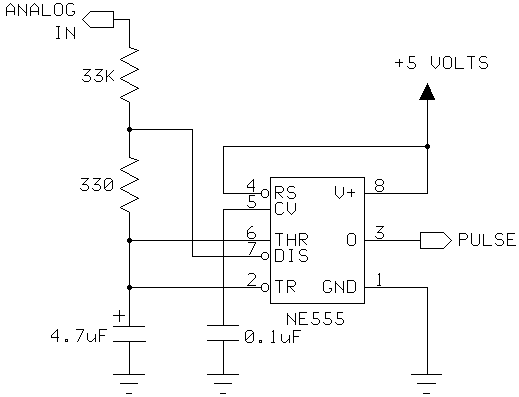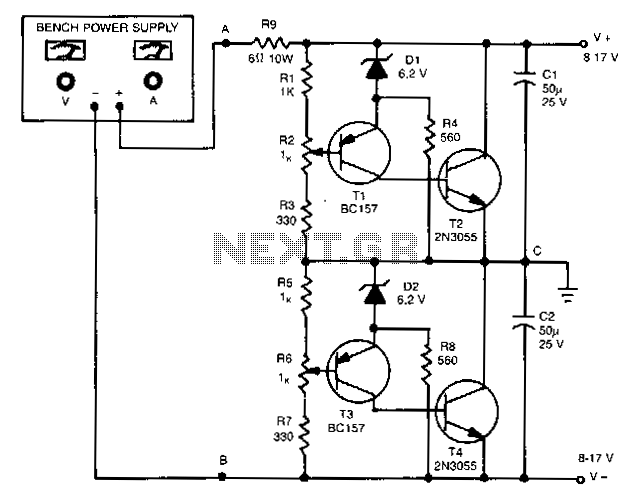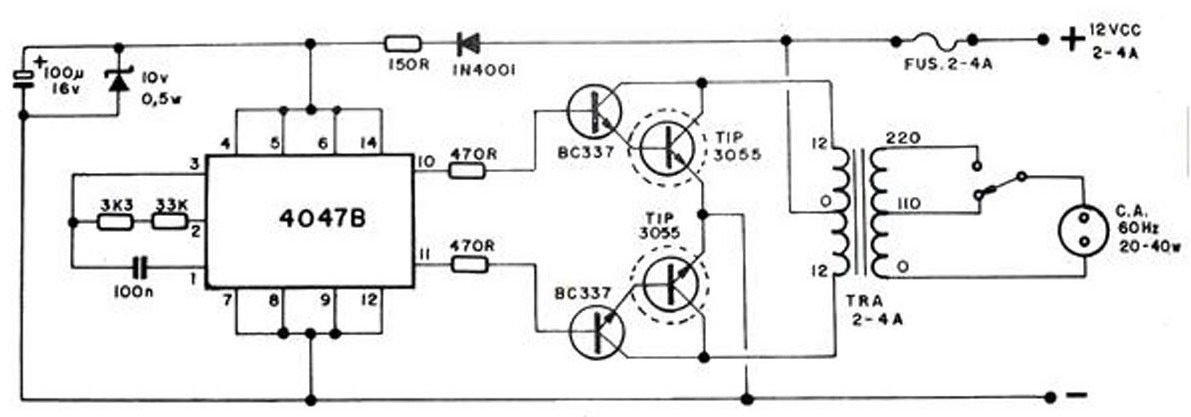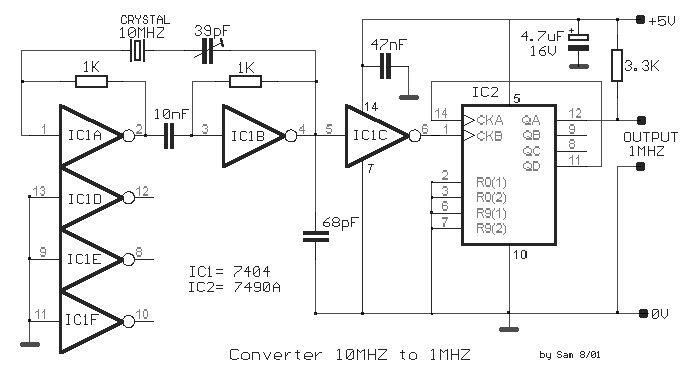
DC-10Khz frequency-voltage converter
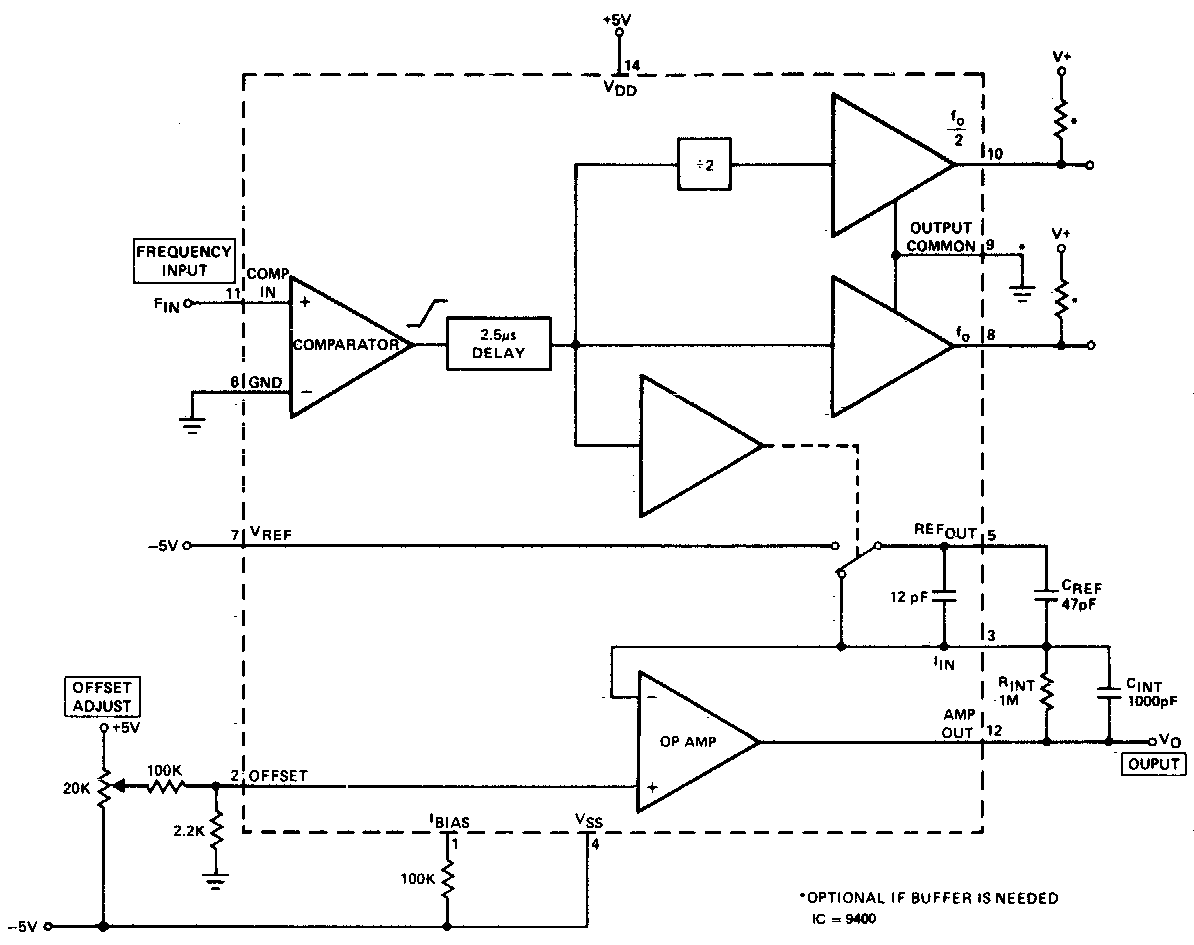
The converter produces an output voltage that is linearly proportional to the input frequency waveform. Each zero crossing at the comparator's input results in a specific change being dispensed into the op-amp's summing junction. This charge subsequently flows through the feedback resistor, generating voltage pulses at the output of the op-amp. The capacitor (Cint) across the resistor (Rint) averages these pulses into a DC voltage that is linearly proportional to the input frequency.
The described circuit functions as a frequency-to-voltage converter, which is a crucial component in various applications such as signal processing and instrumentation. The core of the design includes a comparator that detects zero crossings of the input frequency waveform, which is typically a square wave or sinusoidal signal. Upon each zero crossing, the comparator outputs a pulse that triggers a precise charge injection into the summing junction of the operational amplifier (op-amp).
The op-amp, configured in a summing amplifier mode, accumulates these injected charges over time. The feedback resistor connected to the op-amp plays a vital role in determining the gain of the circuit, thereby influencing the amplitude of the output voltage. As the frequency of the input signal varies, the rate at which the zero crossings occur changes, leading to a corresponding variation in the output voltage.
A key component of the circuit is the integration capacitor (Cint), which is placed in parallel with the resistor (Rint). This capacitor serves to smooth out the voltage pulses generated at the op-amp output, effectively averaging them over time. The time constant defined by the product of Rint and Cint determines the response time of the circuit, allowing it to accurately reflect the input frequency as a stable DC voltage.
In summary, this frequency-to-voltage converter operates by utilizing a comparator to detect zero crossings, an op-amp to integrate the resulting pulses, and a capacitor to average the output, ensuring that the final DC voltage output remains linearly proportional to the input frequency. Such circuits are widely used in frequency measurement applications, analog signal processing, and in systems where frequency needs to be converted to a usable voltage level for further processing or display.The converter generates an output voltage which is linearly proportional to the input frequency waveform. Each zero crossing at the comparator`s input causes a precise amount of change to be dispensed into the op amp`s summing junction.
This charge in turn flows through the feedback resistor generating voltage pulses at the output of the op ampCapacitor (Cint) across Rint averages these pulses into a dc voltage which is linearly proportional to the input frequency 🔗 External reference
The described circuit functions as a frequency-to-voltage converter, which is a crucial component in various applications such as signal processing and instrumentation. The core of the design includes a comparator that detects zero crossings of the input frequency waveform, which is typically a square wave or sinusoidal signal. Upon each zero crossing, the comparator outputs a pulse that triggers a precise charge injection into the summing junction of the operational amplifier (op-amp).
The op-amp, configured in a summing amplifier mode, accumulates these injected charges over time. The feedback resistor connected to the op-amp plays a vital role in determining the gain of the circuit, thereby influencing the amplitude of the output voltage. As the frequency of the input signal varies, the rate at which the zero crossings occur changes, leading to a corresponding variation in the output voltage.
A key component of the circuit is the integration capacitor (Cint), which is placed in parallel with the resistor (Rint). This capacitor serves to smooth out the voltage pulses generated at the op-amp output, effectively averaging them over time. The time constant defined by the product of Rint and Cint determines the response time of the circuit, allowing it to accurately reflect the input frequency as a stable DC voltage.
In summary, this frequency-to-voltage converter operates by utilizing a comparator to detect zero crossings, an op-amp to integrate the resulting pulses, and a capacitor to average the output, ensuring that the final DC voltage output remains linearly proportional to the input frequency. Such circuits are widely used in frequency measurement applications, analog signal processing, and in systems where frequency needs to be converted to a usable voltage level for further processing or display.The converter generates an output voltage which is linearly proportional to the input frequency waveform. Each zero crossing at the comparator`s input causes a precise amount of change to be dispensed into the op amp`s summing junction.
This charge in turn flows through the feedback resistor generating voltage pulses at the output of the op ampCapacitor (Cint) across Rint averages these pulses into a dc voltage which is linearly proportional to the input frequency 🔗 External reference
